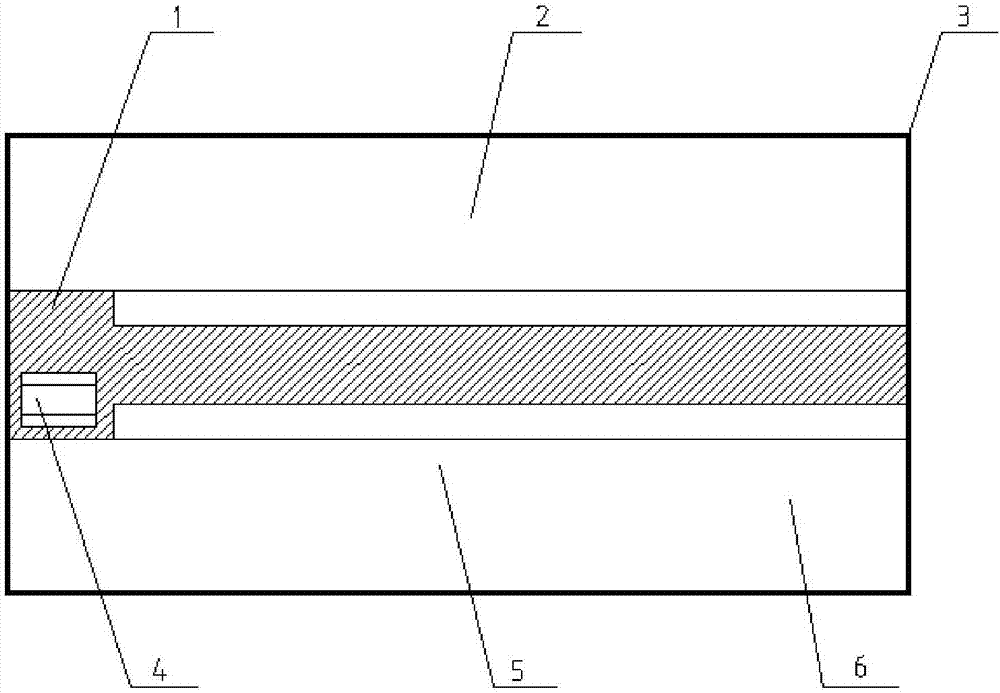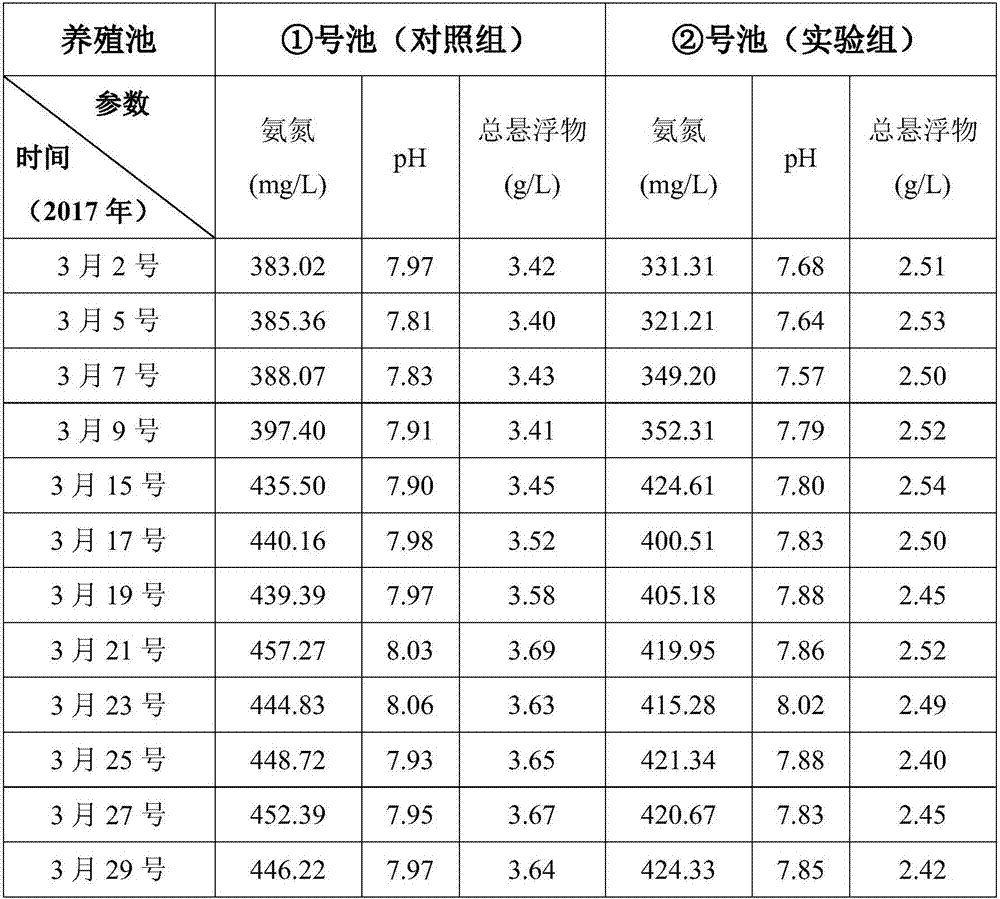In-situ water treatment method of increasing cultivation density of testudines
An in-situ water treatment and breeding density technology, applied in water/sewage treatment, animal husbandry wastewater treatment, water/sludge/sewage treatment, etc., can solve the impact of turtle growth, only a small amount of water change, and large heat loss To achieve the effects of reducing the impact of turtle feeding, improving food quality and safety, and increasing breeding density
- Summary
- Abstract
- Description
- Claims
- Application Information
AI Technical Summary
Problems solved by technology
Method used
Image
Examples
Embodiment Construction
[0023] Such as figure 1 Schematic diagram of the layout of in-situ water treatment to increase the density of turtle breeding. 1 is an aisle, 2 is No. 1 culture pond, 3 is a greenhouse, 4 is a microfilter, 5 is a sewage pond, and 6 is No. 2 culture pond. In order to study this in-situ water treatment method for increasing the breeding density of turtles, the inventor has invested more time, taking the Chinese tortoise (Chinemys Reevesii) as an example, through creative labor and a large number of experiments, this method has been studied. Some of the experimental results are shown in Table 1 and Table 2.
[0024] Table 1 Study on the benefits of in-situ water treatment methods on increasing the breeding density of turtles
[0025]
[0026] Table 2 Contrast results of feeding amount and number of deaths
[0027]
[0028]
[0029] In the greenhouse 3, the temperature of the water body was kept at 30-32°C through the heating system. At the beginning of the experiment,...
PUM
 Login to View More
Login to View More Abstract
Description
Claims
Application Information
 Login to View More
Login to View More - R&D
- Intellectual Property
- Life Sciences
- Materials
- Tech Scout
- Unparalleled Data Quality
- Higher Quality Content
- 60% Fewer Hallucinations
Browse by: Latest US Patents, China's latest patents, Technical Efficacy Thesaurus, Application Domain, Technology Topic, Popular Technical Reports.
© 2025 PatSnap. All rights reserved.Legal|Privacy policy|Modern Slavery Act Transparency Statement|Sitemap|About US| Contact US: help@patsnap.com



